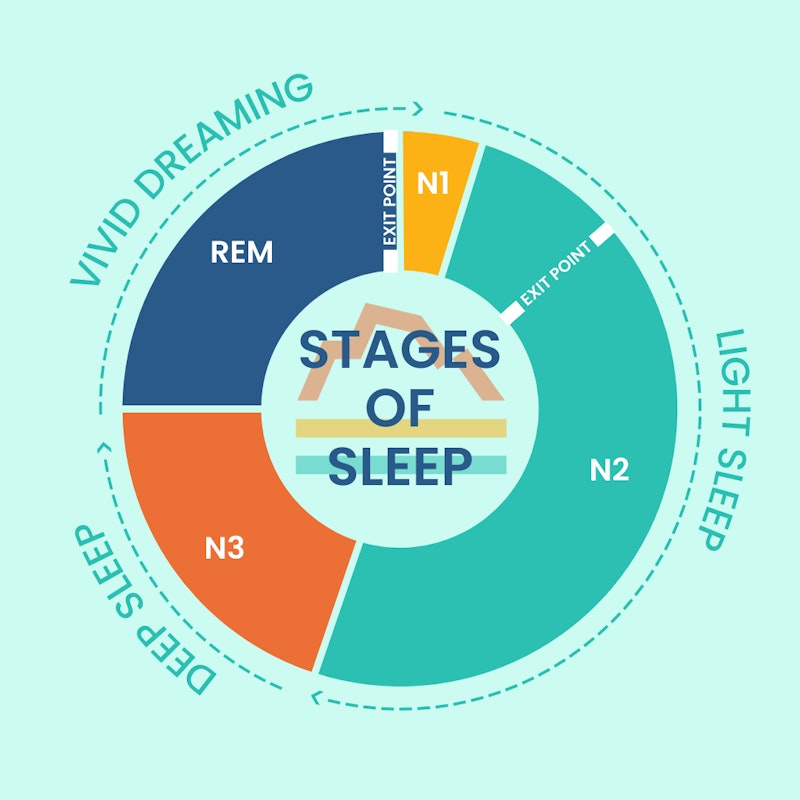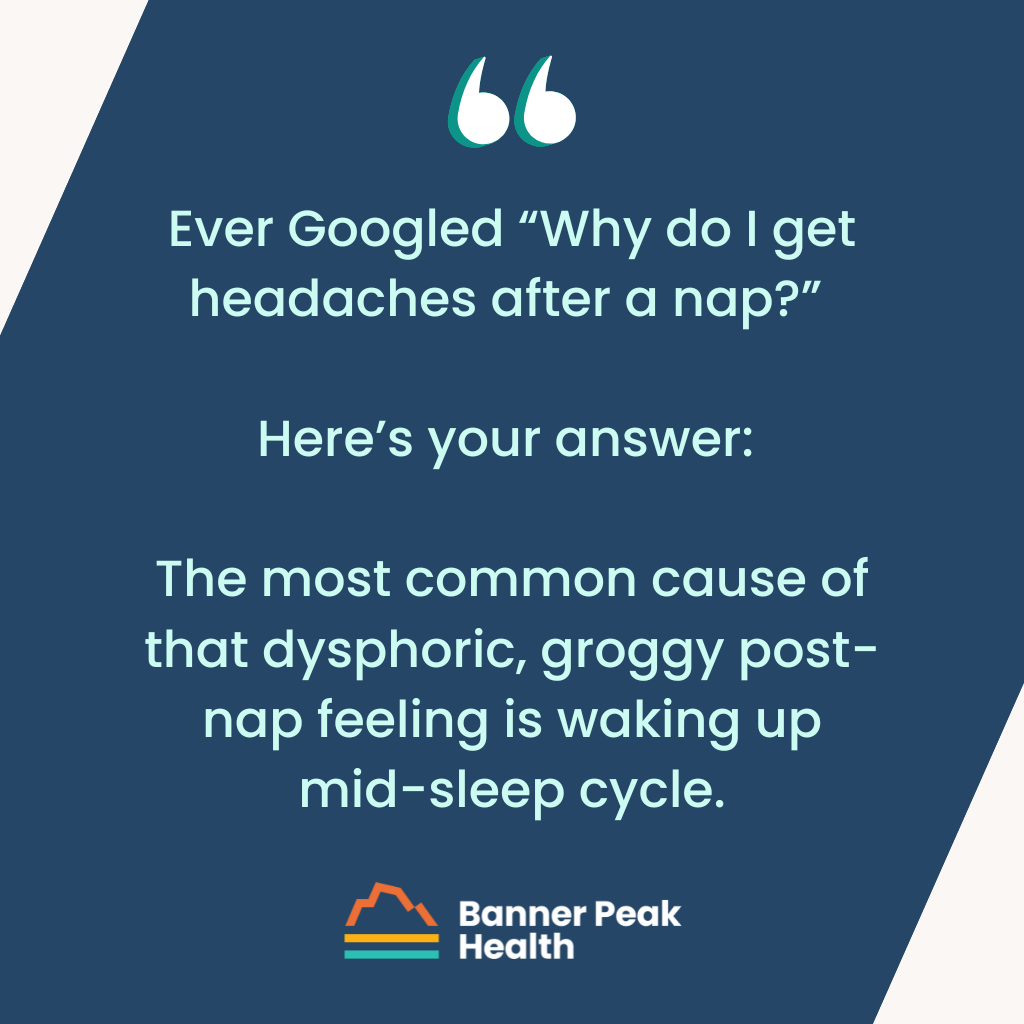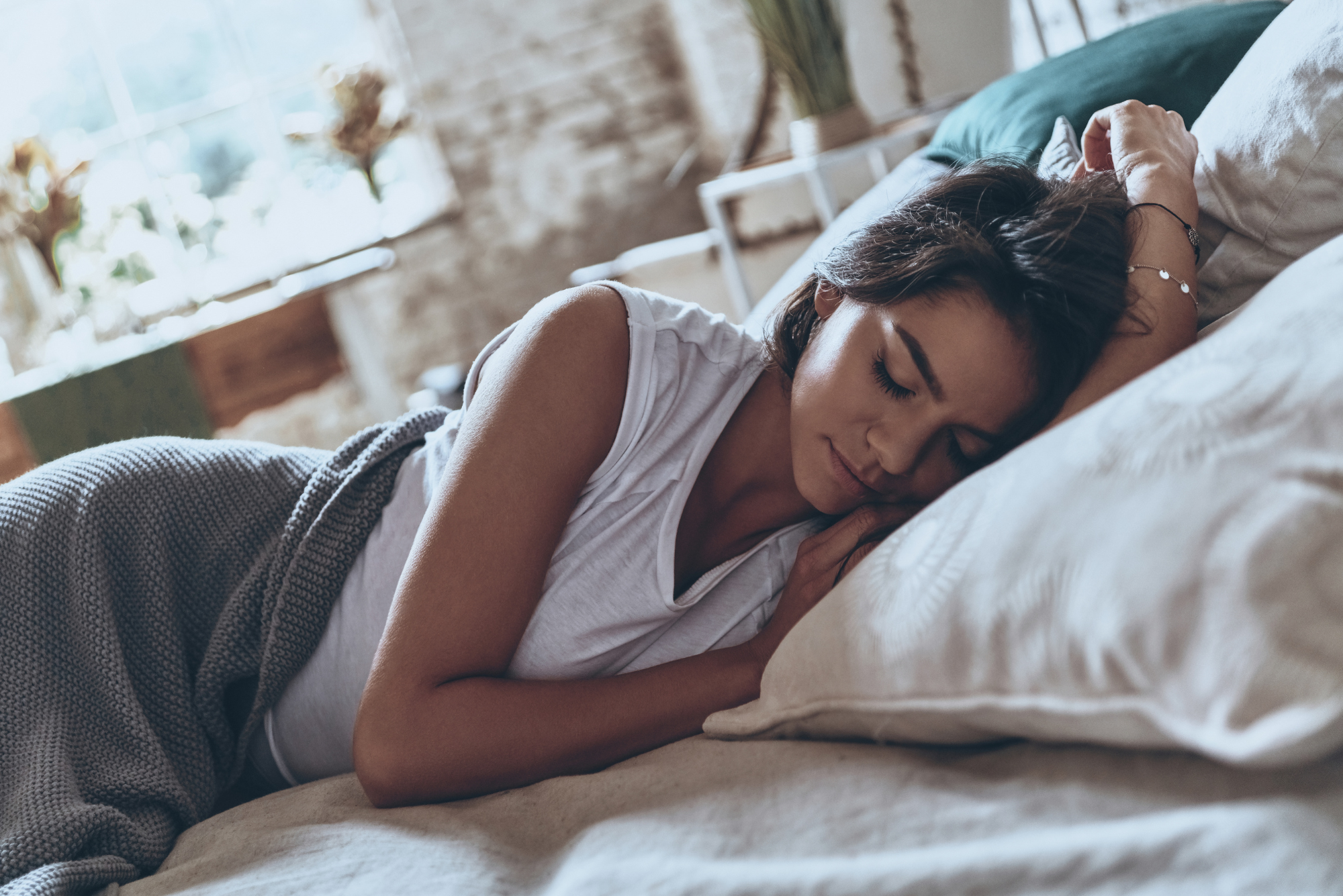There are two types of adults in the world: the ones who benefit from naps, and the ones who don’t.
If you are a “nap person,” you may be one of the many who experience grogginess after a nap. You may have even asked your doctor, “Why do I get headaches after a nap?”
Fortunately, we can help you with these questions.
Sleep has an architecture. You sleep in stages, and when you understand those stages, you’ll understand why your naps aren’t always refreshing and what you can do to change that.
The Architecture of Sleep
Sleep isn’t a random event. It’s made of four individual stages which, together, comprise a 90-minute cycle:
- Stages one and two are light sleep.
- Stage three is called Delta sleep, or deep sleep.
- Stage four is REM (rapid eye movement) sleep. This is the stage in which we dream.

Why Do I Get Headaches After a Nap?
Ever Googled “Why do I get headaches after a nap?” Here’s your answer: The most common cause of that dysphoric, groggy post-nap feeling is waking up mid-sleep cycle.
When you interrupt your sleep cycle, your body doesn’t have the opportunity to complete its natural process. The interruption leaves you feeling out of sync and can result in adverse symptoms, including headaches.
Preventing Headaches After Naps
If you’d like to reduce your potential for grogginess and headaches after napping, there are two techniques I recommend:
- When you lie down to take a nap, set an alarm for 15–20 minutes. This ensures you only spend time in the light sleep stages, making it easier to wake up and less likely you’ll experience uncomfortable side effects.
- If you have time, set your alarm for 90 minutes. This allows your brain to complete a full cycle but wake up before beginning a new one.

Other Advice
If you nap frequently and commonly ask, “Why do I get headaches after a nap?” you may be asking the wrong question.
Perhaps you should ask whether you’re optimizing your sleep at night. For example, are you napping because you don’t sleep well at night? If so, prioritizing your nightly sleep habits should come way ahead of learning how to nap better.
We can help with that, too. Read our most recent blog post on sleep, or contact our office to schedule an appointment. We’re happy to help repair your relationship with sleep.
Today’s Takeaways
- Some people benefit from naps, some don’t.
- Sleep has an architecture of four stages, which take 90 minutes to complete.
- Interrupting your sleep cycle during Stages 3 and 4 can cause uncomfortable side effects such as grogginess and headaches.
- To avoid unwanted side effects from napping, set an alarm for 15-20 minutes so you wake up in a light sleep stage. Or, set an alarm for 90 minutes so you wake up after a complete sleep cycle.
- If find yourself asking “Why do I get headaches after a nap?”, don’t just focus on napping better. Optimize your nightly sleep habits, as well.


Barry Rotman, MD
For over 30 years in medicine, Dr. Rotman has dedicated himself to excellence. With patients’ health as his top priority, he opened his own concierge medical practice in 2007 to practice medicine in a way that lets him truly serve their best interests.



